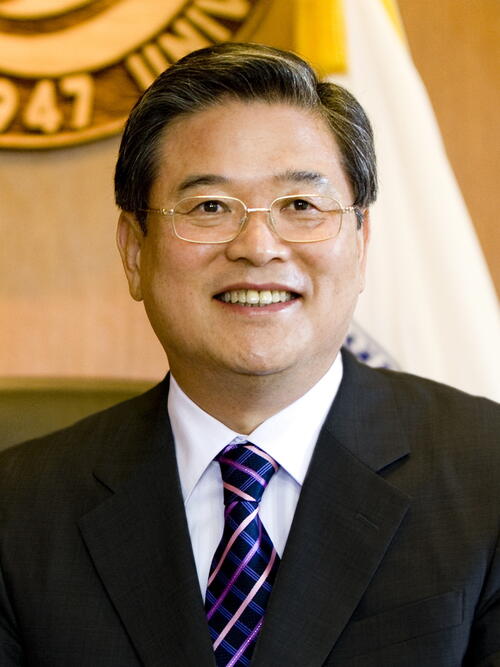The digital Information Technology (IT) revolution currently underway is profoundly reshaping economic activity, influencing politics, and transforming societies around the world. It is also forcing a reconceptualization of the global and local; many of the technologies, platforms, and fundamental disruptions are global in nature, but national or local contexts critically influence the uses and effects of IT.
Digital media— broadly conceived as digital platforms for information creation, transmission, and consumption—is a core driver of the IT revolution. Information is the very essence of civilization itself, and the advent of digital media fundamentally transforms our relationship to information. We have already seen: 1) the Internet maturing as a platform for posting, disseminating, and consuming information, such as online news startups, video such as Youtube, microblogs to evade censorship, and a global marketplace for selling software, advertising and even personal information; 2) the diffusion of mobile communications, making information available across geographic and socio-economic boundaries, and 3) the widespread adoption of social networking services that represent exploration into the next stage of relationships between people, groups, firms, and other entities.
Digital media is also at the crux of the “global meets local” dynamic, since digital media is by nature global, but differences in economic, political, and social conditions across countries lead to wide variation in its impact. For example, digital media is argued to have been a catalyst in the Arab Spring demonstrations that led to regime shifts in Tunesia, Egypt, and then Syria, but digital media in itself may not lead directly to a regime shift in China— due to government success in sophisticated censorship and physical network design.
The Asia-Pacific provides a fascinating array of countries for examination of the political, economic, and socio-cultural effects of digital media on the modern world. Economies range from developing to advanced. Governments include varied democracies as well as one party regimes. The press enjoys relative freedom in some countries, undergoes limited constraints in others, and is tightly controlled in a few. Populations range from dense to sparse, and from diverse to relatively homogenous.
The panels were divided to discuss four major themes:
Digital Media versus Traditional Media
Around the world, digital media is disrupting traditional media such as newspapers and television. Traditional business models are undermined, new entrants proliferate, and experimentation abounds with no end-game in sight. Questions for countries with well-established traditional media include: what are the patterns for the emergence of new players? To what degree do they threaten the traditional? In countries with less diffused traditional media, what are the opportunities enjoyed by digital media?
Beyond business models, the social and political functions of digital media may differ from those of traditional media—particularly where traditional media is subject to close governmental control. Who are the new entrants, and what new functions do they provide? Have traditional media failed as sources of information? What shifts have occurred in how people get information, and how does this differ across countries?
Digital Media and Political Change in Asia
Digital media opens up vast new information flows that can influence political change. From the perspective of grass-roots movements and civil society, digital media provides new tools to congregate, coordinate, and demonstrate. Governments that strongly control civil society, such as China and Vietnam, were alert to the role digital media played in the Arab Spring. What is the potential for digital media in civil society and democratization? In democratic countries such as Japan, South Korea, or India, how is digital media transforming civil society? For example, Japan’s peaceful anti-nuclear demonstrations, coordinated through digital media, displayed an entirely new pattern.
From the perspective of governments, digital media presents not only challenges, but new opportunities to monitor, gather information, and respond to the public. In strong state countries, control of information flows to the people, and gathering of information about people are the cornerstones of state control. How are these states adapting their attempts at controlling media in the face of pervasive digital media? In democratic systems, deciding what information to channel to which voters at what point in election cycles is a critical part of any electoral strategy. How are governments and parties using digital media to reach their constituencies, and what is their effectiveness?
Social Change and Economic Transformation
As a core part of the IT revolution, digital media has opened up new domains of innovation that transforms industries and economies. For advanced countries, it raises serious questions about how best to profit from digital platforms whose underlying technology is increasingly controlled by American multinational firms. For developing countries, the question is how to best take advantage of the world-class computing resources, global markets, and extensive reach enabled by the technological platforms underlying digital media. Instruments such as smartphones and the digital content conveyed on those devices are altering interpersonal relations and even the struggle against poverty in societies such as India.
The advent of social network services is also altering how we conceive of social connections. How do these networks affect groups such as the Korean or Filipino diasporas, and what are the implications for identity, “imagined communities,” and group identification. In what ways is the cohesiveness of groups enhanced by connections such as Facebook or Twitter, and in what ways are groups fragmented along interest cleavages, with people exposed to only ideas and groups of their choice. How does digital media impact social change and how does that impact lead to economic transformation in both developed and developing countries?
Digital Media and International Relations
The growth of digital media produces a powerful and sometimes troubling impact on international relations in the Asia-Pacific region. It can provide greater cultural understanding and regional integration but also aggravate tensions. Cultural phenomenon such as the wildly popular Korean pop star Psy (of “Gangnam Style” fame) arise from the availability of digital media allowing a video to ‘go viral’ on a global scale in weeks. Conversely, tensions over territorial and historical issues in Northeast and Southeast Asia gain credence and momentum from discussion on digital media platforms, often pushing governments to act in ways detrimental to peace and stability. How does digital media influence international relations in the region? Is it a force for positive change or a source of instability? Finally, the rules governing critical parts of the physical infrastructure upon which digital media depend, such as governance of the Internet are increasingly contested in the international domain.
The fifth Stanford Kyoto Trans-Asian Dialogue focused on these issues surrounding the impact of digital media. The Dialogue brought together scholars, policy experts, and practitioners from the media, from Stanford University and from throughout Asia. Selected participants will start each session of the Dialogue with stimulating, brief presentations. Participants from around the region engaged in off-the-record discussion and exchange of views. The final report from the Dialogue will be published on this page as soon as it has been completed.
The Walter H. Shorenstein Asia-Pacific Research Center (Shorenstein APARC) established the Stanford Kyoto Trans-Asian Dialogue in 2009 to facilitate conversation about current Asia-Pacific issues with far-reaching global implications. Scholars from Stanford University and various Asian countries start each session of the two-day event with stimulating, brief presentations, which are followed by engaging, off-the-record discussion. Each Dialogue closes with a public symposium and reception, and a final report is published on the Shorenstein APARC website.
Previous Dialogues have brought together a diverse range of experts and opinion leaders from Japan, South Korea, China, Vietnam, Thailand, Indonesia, Singapore, India, Australia, and the United States. Participants have explored issues such as the global environmental and economic impacts of energy usage in Asia and the United States; the question of building an East Asian regional organization; and addressing the dramatic demographic shift that is taking place in Asia.
The annual Stanford Kyoto Trans-Asian Dialogue is made possible through the generosity of the City of Kyoto, the Freeman Spogli Institute for International Studies at Stanford University, and Yumi and Yasunori Kaneko.





 2008的6月,超过1000万的考生参加了高考,以竞争570个进入大学的名额。尽管高考的初衷是给予每个学生平等的机会,但严重的不平等依然存在着。同等条件下,北京的考生相对于陕西的考生就有更多的上大学的机会,因为北京有更多大学和招生名额。同世界上其他地方一样,中国的大学也倾于照顾本地的生源。
2008的6月,超过1000万的考生参加了高考,以竞争570个进入大学的名额。尽管高考的初衷是给予每个学生平等的机会,但严重的不平等依然存在着。同等条件下,北京的考生相对于陕西的考生就有更多的上大学的机会,因为北京有更多大学和招生名额。同世界上其他地方一样,中国的大学也倾于照顾本地的生源。





